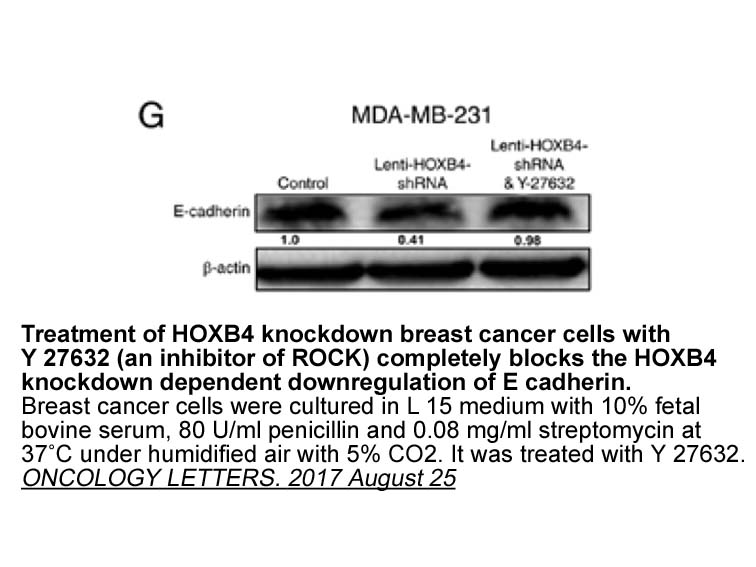Archives
In conclusions it is hypothesized that caffeine
In conclusions, it is hypothesized that caffeine administration could lead to an increase in histamine neuronal activation or release of histamine [38] to induced locomotor stimulation via H1 receptor activation. In addition, the present study also propose that the spaced administration of caffeine (during induction phase) results in intermittent release of histamine in VTA and NAc, subsequently leading to neuroadaptive change in the histaminergic system probably an up-regulation of H1 receptor activity. Therefore, it is further proposed that increase sensitivity of histamine H1 receptors for caffeine induced central histamine levels could also contribute to the observed induction of and cpi 1 to caffeine induced locomotor sensitization downstream to adenosine A1 or A2A antagonism. Finally, from the results of investigated protocols, it is contemplated that caffeine by antagonism of adenosine via A1 and A2A receptor on TMN neurons and in VTA/NAc might results in enhanced central histaminergic transmission to regulate the motor activity in CNS via H1 stimulation and up-regulation, contributing to observed caffeine induced locomotor sensitization. Thus, the results of the present study propose a cardinal contributory role of the central hista minergic system via H1 receptor in the caffeine-induced locomotor sensitization. These results are important as induction of locomotor sensitization is linked to the development of drug addiction as well as in the relapse to drug-seeking behavior. Finally, the outcome of
minergic system via H1 receptor in the caffeine-induced locomotor sensitization. These results are important as induction of locomotor sensitization is linked to the development of drug addiction as well as in the relapse to drug-seeking behavior. Finally, the outcome of  present study delineates the contributory role of central histaminergic transmission in caffeine addiction via H1 receptor stimulation and we project that central H1receptor agonism might be an important target in mediating the reinforcing effects of caffeine.
present study delineates the contributory role of central histaminergic transmission in caffeine addiction via H1 receptor stimulation and we project that central H1receptor agonism might be an important target in mediating the reinforcing effects of caffeine.
Acknowledgment
Introduction
Histamine is a biogenic neurotransmitter, and since 1907, when it was first synthesized, is still in the center of general interest as it plays an important role in the regulation of several (patho)physiological conditions in central nervous system and peripheral tissues (Hough, 2001). The precise effects of histamine are exerted through stimulation of four different G-protein coupled receptor (GPCR) subtypes, namely H1–H4R (Fig. 1) (Arrang et al., 1988, Arrang et al., 1987, Arrang et al., 1983, Arrang et al., 1985a, Hill, 1990, Hill et al., 1997, Leurs et al., 2005, Lovenberg et al., 1999). The most characteristic roles for H1R activation are smooth muscle contraction and increases in vascular permeability, and many of its functions contribute to allergic responses. Thus, H1R antagonists have been very efficacious drugs for the treatment of allergies (Baraniuk, 1997). The H2R has been confirmed to function as a key modulator for gastric acid secretion, and H2R antagonists are largely used for the treatment of gastrointestinal ulcers (Arrang et al., 1988, Soll and Walsh, 1979). The H3R is primarily expressed in the human central nervous system (Arrang et al., 1988, Lovenberg et al., 1999). It functions as a presynaptic release-controlling receptor that regulates histamine, and also, as a hetero-receptor on non-histaminergic neurons modulating the release of norepinephrine, serotonin, GABA, acetylcholine, and other neurotransmitters (Arrang et al., 1988, Arrang et al., 1983, Blandina et al., 1996, Harada et al., 2004, Hill, 1990, Schlicker et al., 1993, Schlicker et al., 1989, Schlicker et al., 1990, Yokoyama et al., 1993).
Activation of the H1R leads to the mobilization of intracellular Ca2+ by activating the Gq family of G-proteins (Hill, 1990). The H2R signals through Gs G-proteins and receptor activation cause significant increases in cAMP, whereas the H3R couples to Gi/o, leading to moderate decreases in cAMP (Fig. 1) (Lovenberg et al., 1999, Nakamura et al., 2000). Also, signaling of H2R has been described to act through PLC/IP3 pathway by activating Gq family of G-proteins leading to mobilization of intracellular Ca2+ (Mitsuhashi et al., 1989, Smit et al., 1996b, Wellner-Kienitz et al., 2003). Recently, H4R was identified and showed a 35% amino acid homology with the H3R and much lower homologies to H1Rs and H2Rs (Liu et al., 2001, Morse et al., 2001, Nakamura et al., 2000, Nguyen et al., 2001, Oda et al., 2000, Zhu et al., 2001). The knowledge on the physiological and pathophysiological function based on H4R modulation is steadily increasing (Jablonowski et al., 2004, Jablonowski et al., 2003, Schneider and Seifert, 2016). However, preclinical data strongly suggest its potential therapeutic exploitation in allergy, inflammation, autoimmune disorders and possibly cancer. Hence, H4R can mediate chemotaxis and calcium influx in mast cells and eosinophils (Hofstra et al., 2003, O'Reilly et al., 2002, Stark et al., 2004, Walter and Stark, 2012).